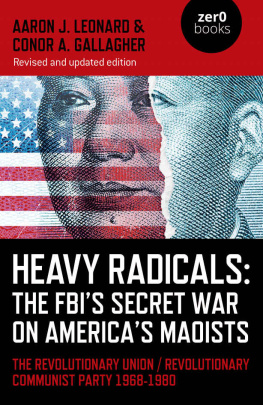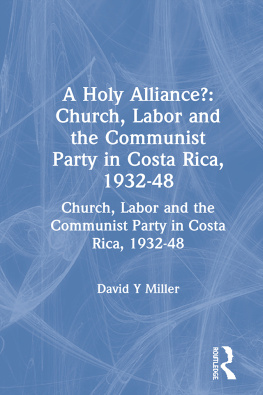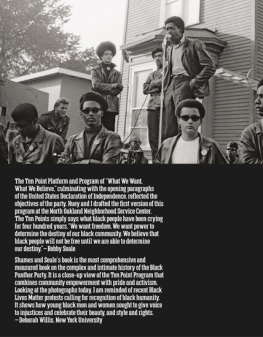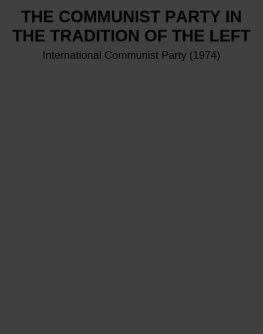A THREAT OF THE
FIRST MAGNITUDE
A THREAT OF THE
FIRST MAGNITUDE:
FBI Counterintelligence & Infiltration
from the Communist Party to the
Revolutionary Union 1962-1974
Aaron J Leonard & Conor A Gallagher
In memory of Kevin,
Bill, Peter & Craig
Contents
Introduction
Counterintelligence & Informants
Prelude
The Shadow of Roman Malinovsky
Chapter One
Morris Childs & His Handlers
Chapter Two
The FBIs Maoist Sect
Chapter Three
Richard Aoki The Reliable Source
Chapter Four
The Infiltration of Americas Maoists
Chapter Five
Don Wrights Rise in the Revolutionary Union
Chapter Six
The FBIs Representative on the National Liaison Committee
Chapter Seven
The Never-Ending Campaign against James Forman
Chapter Eight
The Wrecking of the National Liaison Committee
Chapter Nine
Aftermath
PREFACE
When we began work on Heavy Radicals in the spring of 2012, we felt we could assemble enough information to publish a reasonable first pass of the history of the largest American Maoist grouping to emerge from the long Sixties, the Revolutionary Union/Revolutionary Communist Party. As things turned out that book explored not only the political vicissitudes of attempting to be the agent of Maoist communism in the US, but also dealt with and had to deal with the intertwined campaign by the FBI to monitor, staunch, and hold the potential to destroy it.
In tapping into the FBIs campaign against the RU/RCP we unearthed a bounty of documents which made clear that the larger legacy of what the Bureau did in that period has not been fully explored. On the surface it appears the FBI in the Sixties and Seventies is a subject that has been plowed over and then over again, with little new to learn. What we found, however, was quite the opposite. Beyond the usual suspects the Black Panther Party, the Weatherman, a few key individuals and celebrities a whole other realm remained untouched. Such groups as the Communist Party USA, the Socialist Workers Party, the Progressive Labor Party, and the Revolutionary Union, have been relegated to the margins, yet in many respects that is where the bodies are buried. We learned this early in our research, where once we pulled on the Revolutionary Union thread it revealed, among other things, the FBIs efforts against Students for Democratic Society, how the Bureau fed stories to trusted media contacts to target organizations and individuals, and of their Ad Hoc Committee for a Marxist-Leninist Party, a group we now know was a vehicle for Bureau operations against the CPUSA, the Progressive Labor Party, the Revolutionary Union, the Weathermen, and others.
From the standpoint of the research-writer there appears to be no particular rhyme or reason to what the government will release and when. Certain things that seem to have long since passed their shelf life are held onto for dear life, while other seemingly highly sensitive documents are freely given. For example, Leibel Bergman, the key founder of the RU and former member of the CPUSA, has the largest file running many thousands of pages yet to date we have received only select sections from his FBI Newark Office file and pages from the Bureaus Ottawa legal attach file, all in all numbering less than two-hundred pages. Yet the file on one of the highest RU leaders in the mid-Seventies, Mickey Jarvis, was released relatively quickly, including duplicate versions from different FBI field offices, one set with many redactions, another with relatively few, which gave us insights into highly secret operations. In other cases we were told certain RU files were destroyed, only to find the information we sought in the files of other field offices.
What has been striking in our research was the relative ease with which we have uncovered things the government continues to try and keep secret under the justification of protecting techniques and procedures for law enforcement investigations. The major barrier to disclosure has not been government intransigence there are so many secrets squirreled away in so many corners it is nearly impossible for anyone to keep track of them all but rather the ability to know what to ask for and how to make sense of material that is released.
This last point is perhaps the most challenging. The initial aim of this project was to tell the story of FBI counterintelligence, specifically the method and execution of counterintelligence in relation to the RU and others in the New Communist Movement. As we started to digest the trove of documents, however, we realized there was another more important story to tell. The critical element flowing through the bulk of what we received was not an amorphous counterintelligence, but rather the meticulous detail and intimate insights garnered from informant reports. Surveillance, wiretapping, break-ins, poison-pen letters, and the like were important and seem to have received most of the media and popular attention yet it was only when the Bureau had well-placed informants that they seemed to be firing on all cylinders. Their ability to carry out a proper counterintelligence operation aimed at disrupting, if not destroying, a group largely hinged on the kind of intelligence only an informant could supply. And here we came to understand it was not just any informant of which there were scores, or in the case of the CPUSA, hundreds. The most important informants for the Bureau were those that had penetrated to the very top of the groups that concerned them. This was not accidental, but the result of precise planning and what looks to have been a successful doctrine on the part of the Bureau that evolved over many years.
There is in this the matter of how much credibility to afford the FBIs files. As Arthur Eckstein noted in his recent book on the Weathermen a work relevant especially because of its examination of a huge cache of previously secret documents released FBI internal memos and missives were not written for public consumption, but instead for the internal operations of the Bureau. This was the FBI talking with its own. In order to have any kind of effectiveness they needed to be truthful, to the degree they had hold of the truth, to one another. Saying that, we have the added benefit of ample documentation from government reports, press accounts, personal memoirs, and other sources to confirm, question, or disregard the Bureaus version of events.
In contrast to the view of a certain acceptance of these reports is one that argues extreme skepticism. The FBI, with its technical capability and legacy of deceit, could have manipulated and forged hundreds if not thousands of pages of records to such a degree that what has been released cannot be believed. Those making this claim such as in the case of Richard Aoki have not produced evidence to prove such an extraordinary charge, leaving then the difference between what is possible and what is demonstrable. Further, such an incredulous view tends to give credit to the FBI for things they have not accomplished and leave those that they have unexamined.
In looking at this, and assessing what we have learned, many of our assumptions about the period have been upended. There were it seems consequential forces operating in the shadows not the sole or necessarily determinant driver of events, but forces that played a much bigger role than has previously been acknowledged. What will be revealed as even more secrets from that period finally come out from the shadows is an open question, one we look forward to exploring in the bright light of day.
Next page






![Communist Party of PeruCommunist Party of Peru - Shining - The Collected Works of the Communist Party of Peru. 1968-1999 [Warning: Hate Speech and Negationism]](/uploads/posts/book/267146/thumbs/communist-party-of-perucommunist-party-of-peru.jpg)




